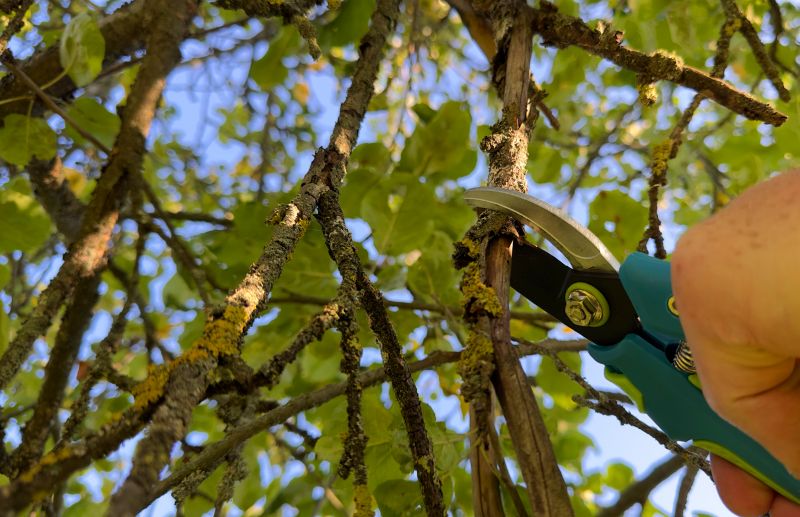Ultimate Selection of Fruit Tree Pruning Supplies for Garden Enthusiasts
Find the essential tools and accessories that help you prune fruit trees with confidence and achieve optimal results.
 Pruning fruit trees is a vital horticultural practice that helps maintain tree health, improve fruit production, and shape the overall structure of the tree. Proper pruning involves removing dead, diseased, or overgrown branches to promote better airflow and sunlight penetration. Having the right tools and products can make this task safer and more effective, whether you are a seasoned gardener or a casual hobbyist. From traditional hand pruners to specialized pruning saws, there are numerous options designed to accommodate different tree sizes and pruning needs.
Pruning fruit trees is a vital horticultural practice that helps maintain tree health, improve fruit production, and shape the overall structure of the tree. Proper pruning involves removing dead, diseased, or overgrown branches to promote better airflow and sunlight penetration. Having the right tools and products can make this task safer and more effective, whether you are a seasoned gardener or a casual hobbyist. From traditional hand pruners to specialized pruning saws, there are numerous options designed to accommodate different tree sizes and pruning needs.
Types of Products For Fruit Tree Prunings
Bypass Pruning Shears
Designed for clean cuts on small branches and stems, bypass shears are ideal for detailed pruning tasks on fruit trees.
Anvil Pruning Shears
Suitable for thicker branches, anvil shears feature a single sharp blade that cuts against a flat surface, providing leverage for heavier pruning.
Pruning Saws
Longer blades with serrated edges allow for cutting larger branches and limbs safely and efficiently.
Loppers
With long handles for extra leverage, loppers are effective for reaching and cutting medium-sized branches.
Telescoping Pruners
Extendable tools that enable pruning of high branches without a ladder, offering safety and convenience.
Pole Pruners
Mounted on extendable poles, these tools facilitate pruning of tall trees from the ground.
Pruning Knives
Small, handheld knives used for delicate cuts and shaping on fruit trees.
Grafting Tools
Specialized tools for grafting and pruning, useful in orchard management.
Safety Gloves
Protective gloves designed to prevent cuts and scratches during pruning tasks.
Sharpening Stones
Tools to keep blades sharp for clean, effective cuts over time.
Tree Pruning Paint
Used to seal large cuts and wounds after pruning, promoting healing and preventing disease.
Popular Choices
Ideal for quick, precise cuts on small branches and stems, favored for their ease of handling.
Designed for thicker branches, offering increased leverage and cutting power.
Portable saws that fold for safety and storage, suitable for on-the-go pruning tasks.
Popular for pruning tall trees from the ground, combining reach with ease of use.
Designed to reduce hand fatigue during extended pruning sessions, favored by professionals.
All-in-one sets that include various pruning tools, offering versatility for different pruning needs.
Known for their smooth cutting action and durability, these saws are popular among serious gardeners.
Convenient for grafting and delicate pruning on fruit trees, appreciated for precision.
Offers protection during thorny or rough pruning tasks, widely used for safety.
Complete sets for maintaining blade sharpness, ensuring clean cuts over time.
Effective pruning products are crafted to provide clean cuts that minimize damage to the tree. Sharp blades and ergonomic handles can reduce user fatigue and improve precision. Additionally, safety equipment such as gloves and protective gear are essential to prevent injuries when working with sharp tools or handling thorny branches. For larger pruning jobs, telescoping pruners and long-handled saws can help reach higher branches without the need for ladders, making the process safer and more efficient.
Choosing the right products depends on several factors, including the size of your fruit trees, the type of branches you need to prune, and your comfort level with different tools. Investing in high-quality products can lead to cleaner cuts, healthier trees, and a more enjoyable pruning experience. Whether you are managing a small orchard or maintaining backyard fruit trees, the right pruning products can help you achieve optimal results while reducing effort and risk.
Key Buying Considerations
- Identify the types of branches you need to prune to select appropriate tools.
- Choose tools with sharp, durable blades for clean cuts and longevity.
- Consider ergonomic designs to reduce hand fatigue during extended use.
- Assess the reach needed; extendable tools can help prune high branches safely.
- Ensure safety features such as lock mechanisms and protective guards are in place.
- Select lightweight tools for ease of handling, especially for prolonged tasks.
- Check for rust-resistant materials to maintain tool integrity over time.
- Determine if a multi-tool set suits your various pruning needs for convenience.
- Evaluate blade replacement or sharpening options for ongoing maintenance.
- Consider the size and weight of tools to match your strength and comfort level.
- Look for tools with non-slip grips to enhance safety and control.
- Decide on manual versus powered tools based on the scale of your pruning projects.
- Read reviews to gauge user satisfaction and tool performance.
- Ensure tools are compatible with the types of branches and wood you typically prune.
- Factor in storage options for organizing your pruning tools efficiently.
